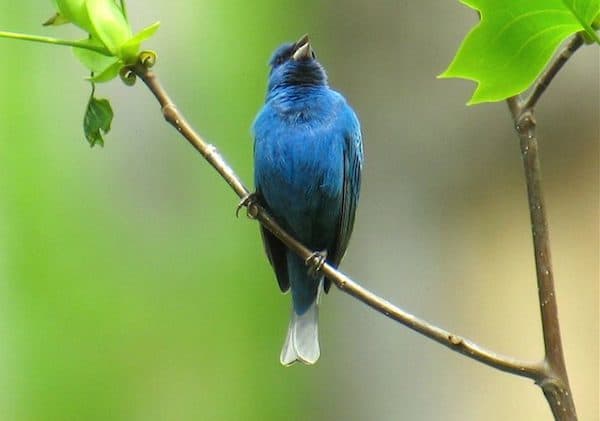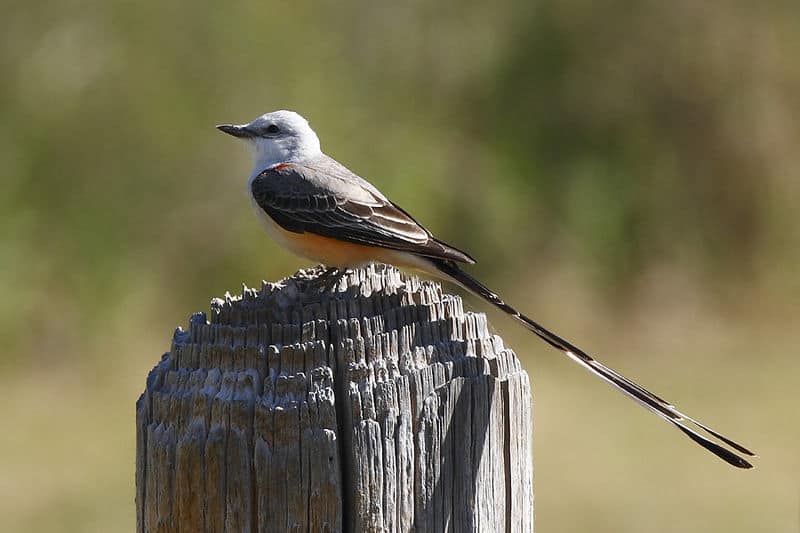Kentucky’s rich natural history has been documented by a host of both well-known and more obscure individuals since the time it was first visited by explorers and settled. Among the most storied visitors to the state was John James Audubon, himself, who spent a great deal of time at Louisville and Henderson in the early 1800s. Many of Kentucky’s birds were documented for the first time by Audubon, and even a few, like the Henslow’s sparrow, were first described from Kentucky. Audubon’s accounts are some of the most detailed on now extinct species such as the Carolina parakeet, passenger pigeon and ivory-billed woodpecker.
Other notable individuals like Alexander Wilson and Constantine Rafinesque also visited Kentucky during the first part of the 19th Century and contributed much to the early knowledge of Kentucky’s birdlife. Later in the 1800s, more and more scientists came through Kentucky, but by then it was resident biologists like Charles Beckham and Leon Pindar who began to contribute the most information regarding Kentucky’s birds to the ornithological journals that were becoming established across the country.
A hallmark event for the study of Kentucky birds occurred in 1925, when Dr. Gordon Wilson and a small band of amateur bird watchers and trained ornithologists formed the Kentucky Ornithological Society, which to this day has continued publication of a quarterly journal, The Kentucky Warbler, on the state’s birdlife. Over the years, the membership of the society has slowly grown and the society continues to spread the word about Kentucky’s rich birdlife, assists where possible in the conservation of the state’s birds, and offers statewide recreational opportunities for anyone interested in birds.
One Kentucky native, Robert Mengel, recognized a void Kentucky’s ornithological literature in the early 1950s. The state had no book comprehensively summarizing the occurrence of Kentucky’s birds. So during the 1950s he undertook the writing of the Birds of Kentucky, which was published in 1965 and to this day remains an unparalleled benchmark for the status of most of Kentucky’s birds.
In more recent decades, efforts undertaken by the Kentucky Ornithological Society and the State of Kentucky have served to update the status of Kentucky’s birdlife through the publication of The Kentucky Breeding Bird Atlas (1996) and an Annotated Checklist of the Birds of Kentucky (2003). Both are valuable resources for anyone wishing to know more about the state’s birdlife.
The development of the Internet as an efficient means of distributing information on bird sightings has become the standard for Kentucky’s bird watchers. A plethora of websites and listserves devoted to specific areas or topics of interest have sprung up and are heavily utilized by our state’s bird-watching community.
Key species/phenomena
As a landlocked state Kentucky is not blessed with the diversity of birdlife that coastal areas offer. Nonetheless, its placement in the central United States offers bird watchers great opportunities to experience a wide variety of birds. Our state’s largely rural nature makes great bird watching locales easy to find. In fact, the combination of federal and state “natural” lands that are easily accessible for bird watching—national parks, national forests, state parks and nature preserves, wildlife management areas, and others—makes it one of the most bird-watching friendly states in the nation!
Kentucky has a great diversity of habitats—from mature mountain woodlands in the east to floodplains swamps along the Mississippi River of the far west—that make for a good mix of birdlife. Because we have such marked seasonal variation in temperature, the birdlife changes greatly as well. In fact, more than 360 species have been reliably reported from the state.
The highlight season of the year for bird watching in Kentucky is spring, when large numbers of colorful songbirds return from wintering farther to the south. Some pass through on their way farther north, whereas many stay to nest. Kentucky also lies right in the path of many southbound migrants during fall migration. Winter can be a good time to study the resident species, which are hardy enough to make it through our weather extremes.
Tips for successful bird watching
Birding in Kentucky can be rewarding at any time of year, but you should be well prepared in order to make the most of your bird watching experience. A decent pair of binoculars is essential. Most birds are small, mobile, and skittish, so the plumage details of many birds will remain beyond your ability to observe with the naked eye. Once you’ve become accustomed to your binoculars, you will find it hard to walk around anywhere without them.
Feeding birds is a good way to start bird watching in Kentucky. Many species can be attracted to your backyard by offering a variety of natural (trees, shrubs, flowers) and provided (sunflower, cracked corn, millet, etc) foods, as well as water and cover. Operating a well-stocked feeding station in your yard can allow you to become familiar with an amazing variety of Kentucky’s birds from sparrows and finches to woodpeckers and hummingbirds.
Bird feeding is a good way to learns ome of the common backyard species in your area of Kentucky, so that you more readily recognize different species when you run across them. Learning songs and calls of common species can lead to more enjoyable bird watching, too. Most species have unique songs and calls, and some birds’ are just as interesting to hear as to see. Knowing songs and calls also simplifies identification as you learn to identify what you are scanning for well before you’ve seen it. There are a number of useful resources that can help in learning bird songs and calls.
Kentucky’s climate can be a challenge to bird watching. While many spring and fall days are pleasant, cold winter temperatures require thick, layered clothing for warmth. In contrast, any time from late spring through early fall, heat and humidity can cause bird watchers to wilt and birds to disappear for cool cover. Sunscreen, a good supply of water, and cool clothing (including a good hat) are essential to a safe and enjoyable summer birding outing in the bluegrass state.




